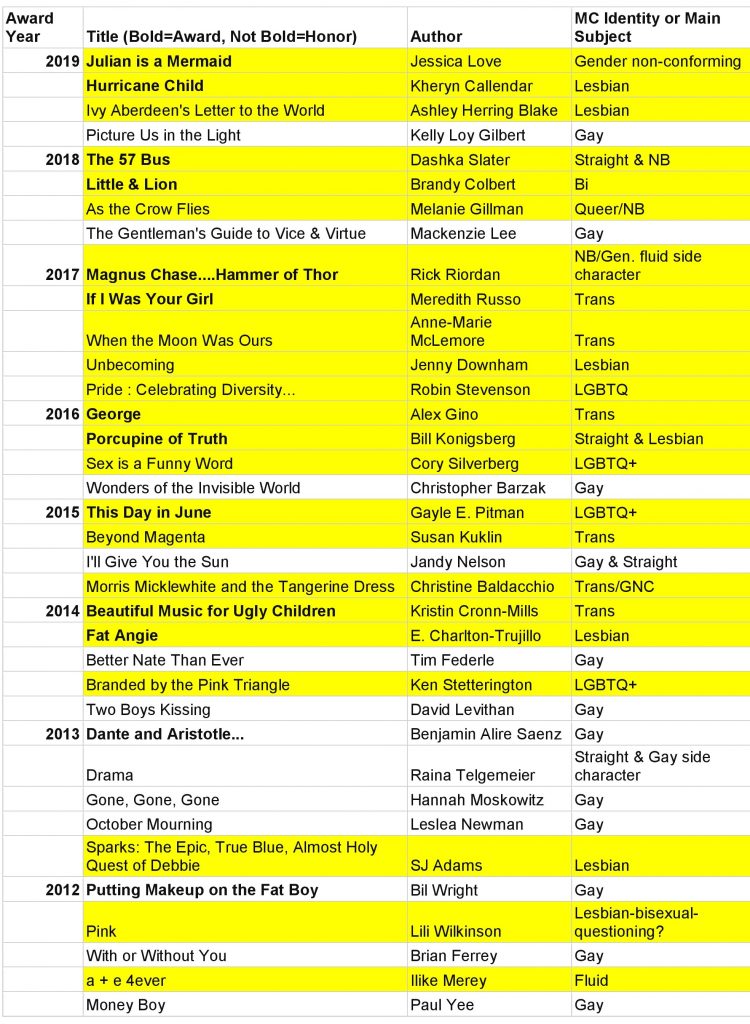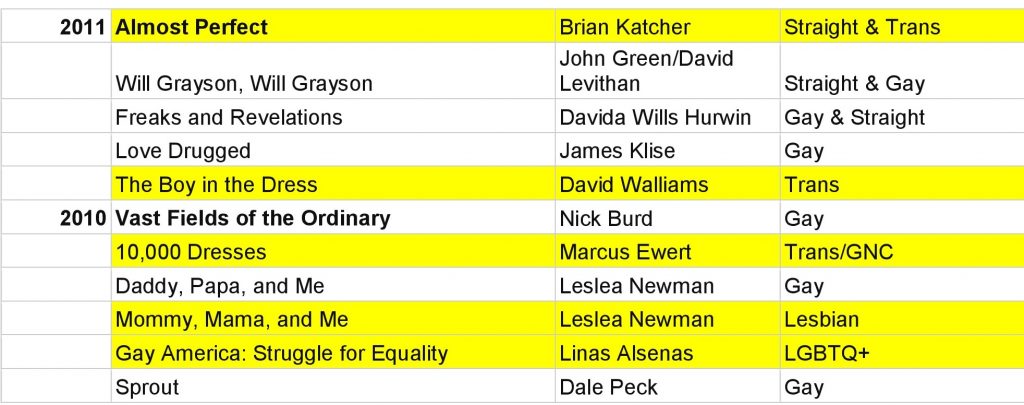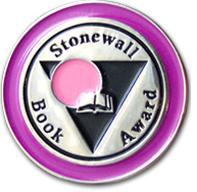Recently, there has been online discussion of the Stonewall Awards, specifically regarding the Children’s and Young Adult winners and honorees being skewed toward cisgender, queer male characters. While we recognize that many of the winners/honorees from the awards’ first few years contained main characters of those identities, we also know that those were the characters that publishers were in large part choosing to publish at the time. Thankfully, publishing trends have evolved throughout the years and expanded to provide our committees with more and more examples of beautiful stories involving characters other than cisgender, queer men. The GLBTRT recognizes an imperfect process and stands by its winners and honorees throughout the years.
“In my two years on Stonewall, the sheer number of potentially eligible titles has grown at an astounding rate,” says last year’s chair, Kathleen Breitenbach. “We’re seeing more genre fiction, more diverse experiences, and while there’s still a lot of realistic fiction, in my experience, a smaller percentage are problem novels or coming out narratives.”
Breitenbach is optimistic about trends in publishing. “[The industry] is getting better about having more LGBTQIA+ experiences in middle grade books (not just stories where a kid has two moms or two dads), and we’re seeing more books showing asexual, bisexual, and transgender experiences. Diversifying the pool of eligible titles racially in terms of characters and authors may be slower, and we can’t always easily identify if authors identify as LGBTQIA+, but we are getting more own voices, and I hope that trend, of getting more own voices, continues so that more authentic stories are told.”
Another recent Stonewall Committee member, Dave Saia, remembers that “in 2005, I started volunteering with Gay & Lesbian Youth Services of Western New York; helping them build a resource library and with a book donation project. At the time, we struggled to come up with fifteen well-reviewed titles that we could donate to area public and high school libraries. When I compare that with my experience on Stonewall this year, it is really breath-taking to see how much has changed.”
Commenting on his experience last year, Saia says, “I was proud of the committee’s choices because they reflected the variation of our community. Three of the four main characters in the books selected by the committee were persons of color, as were two of the authors, and the queer identities of the main characters were varied as well.”
Below are recent examples of how the various committees have honored all members of our beautiful community.
(Information compiled by Mary Gen Davies)


In closing and just for fun, we asked our interviewees to provide recommendations for titles that feature characters other than cisgender, gay males.
Saia: “My favorite non-cis gay male book is The Other Boy by M. G. Hennessey. I think the author captured the struggle and fear that kids like Shane face, while still having an optimistic tone that all kids need.”
Breitenbach : “Fave non cis gay male book: The 57 Bus by Dashka Slater holds a very special place in my heart for its representation of real people and events, extensive glossary of terms, and exploration of Sasha’s intersectional identities. We Are Okay by Nina Lacour made me cry each of the three times I read it. Favorites so far in 2019 include Once and Future by Amy Rose Capetta and Cori McCarthy, and The Afterward by E.K. Johnston.”

Many heartfelt thanks Kathleen, Dave, and Mary Gen for this post, and to Mary Gen for being so responsive to what was going on in the Twittersphere.